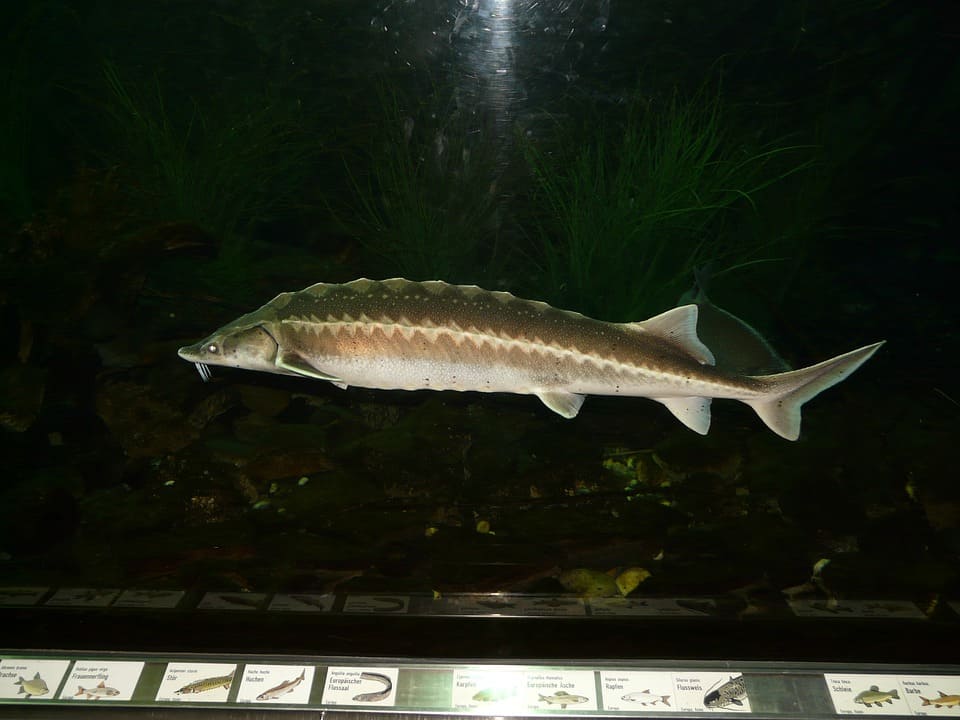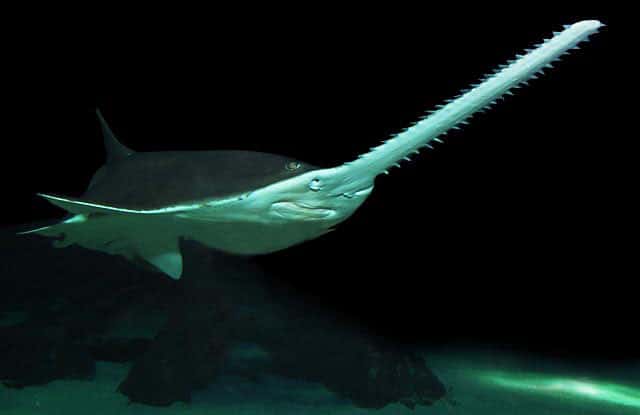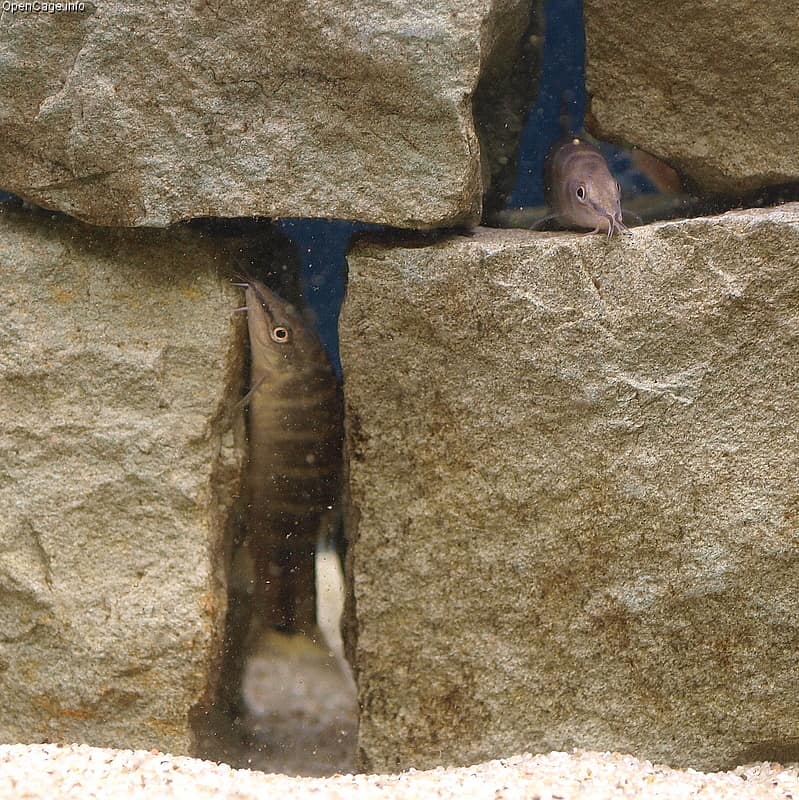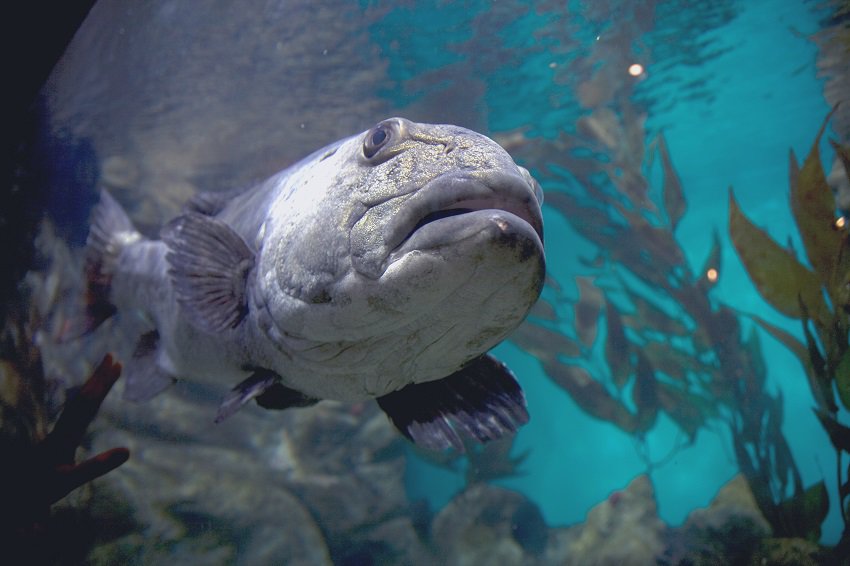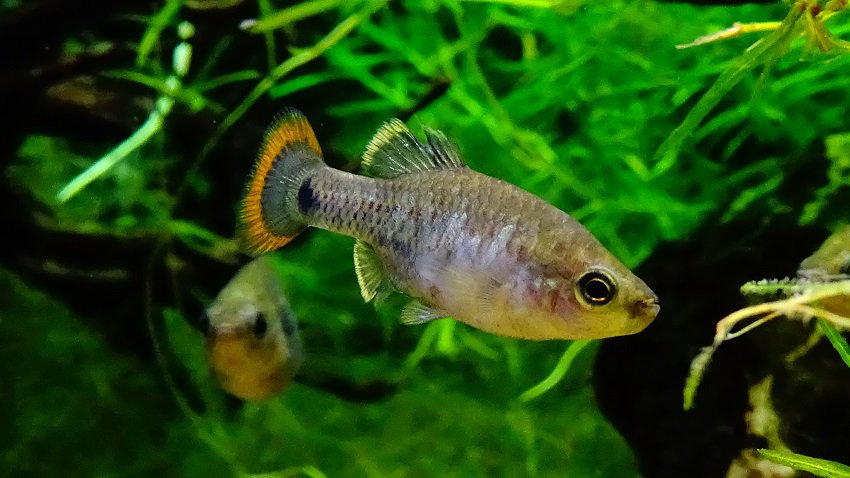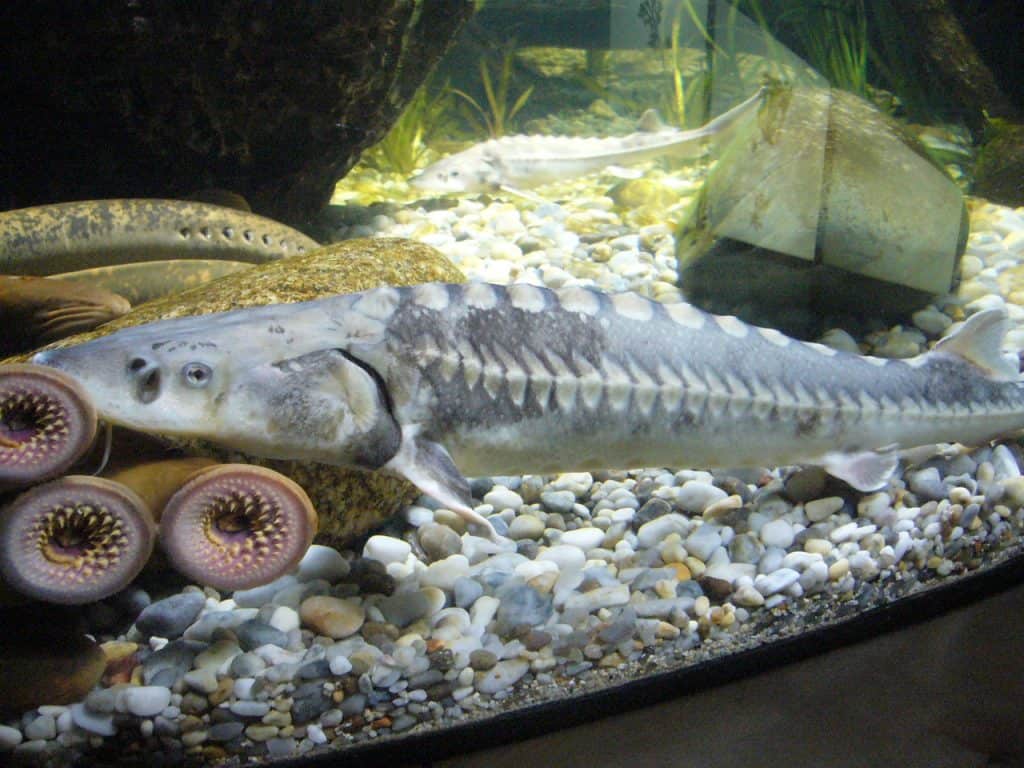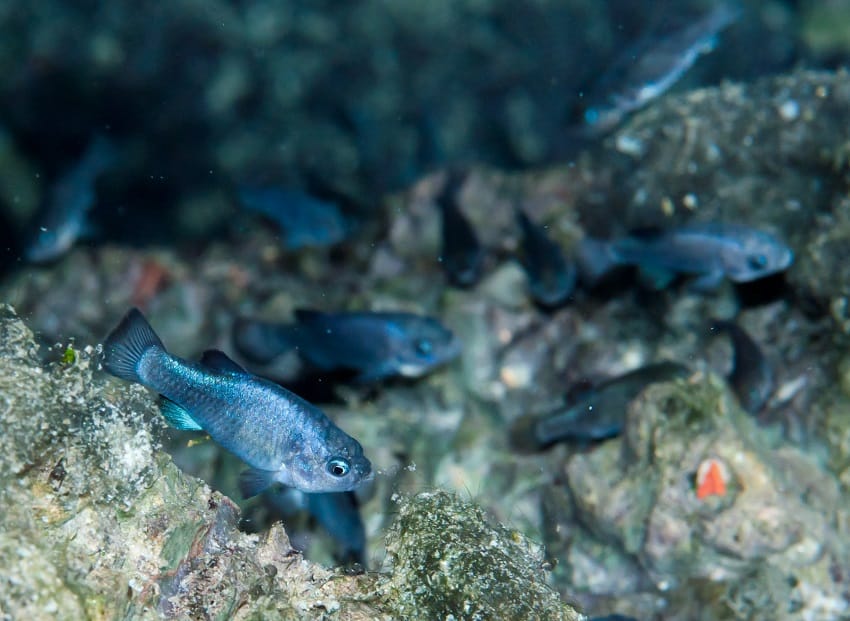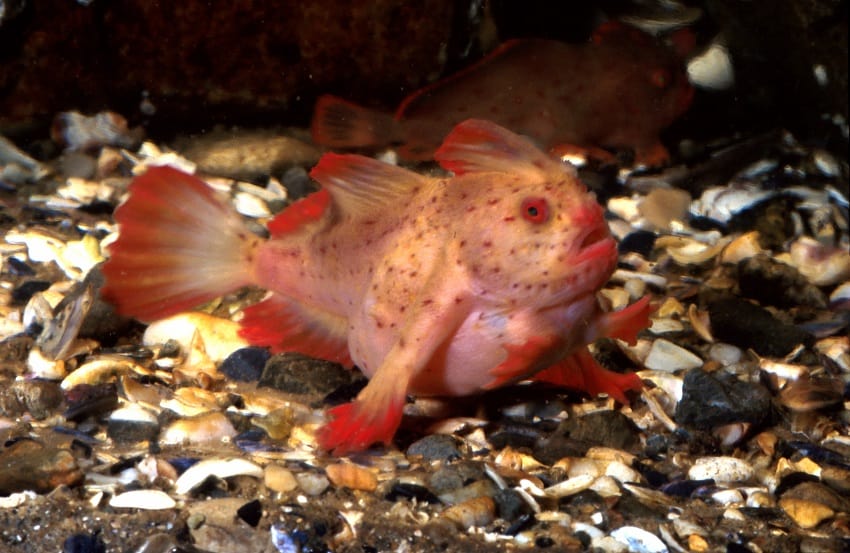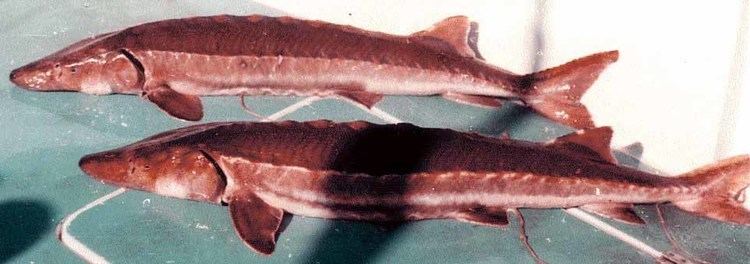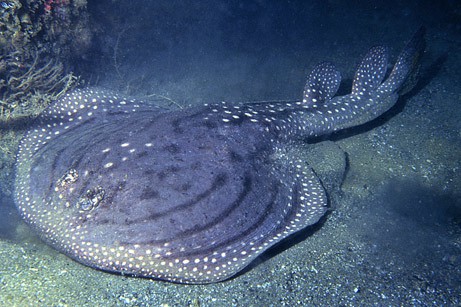Over the past few decades, concerns have been raised over the negative impact that overfishing has had on several marine species and their natural habitats. As a result, several species of fish are now considered critically endangered and have become increasingly rare in the wild. Almost all of the rare fish on this list have had their wild populations destroyed by humans taking more fish than is sustainable.
Although there are now several laws protecting these rare fish from further threats, many have not yet recovered in the wild. However, a few fishes on this list have made a small recovery through extensive conservation efforts.
- European Sea Sturgeon (Atlantic Sturgeon)
- Smalltooth Sawfish
- Kissing Loach
- Giant Sea Bass
- Tequila Splitfin
- Adriatic Sturgeon
- Devils Hole Pupfish
- Red Handfish
- Sakhalin Sturgeon
- Ornate Sleeper Ray
Range (Location): Garonne River, France
Size of Range: 10 km² (3.86 mi²)
Scientific Name: Acipenser sturio
Conservation Status: Critically Endangered (CR)

photo source: Pixabay
The European Sea Sturgeon, also known as the Atlantic Sturgeon (not to be confused with the other Atlantic Sturgeon (Acipenser oxyrinchus oxyrinchus)), is a rare fish found only in the Garonne River in France. Historically, the European Sea Sturgeon had a much larger range from the North and Baltic Seas, English Channel, European coasts of the Atlantic, northern Mediterranean west of Rhodos, and western and southern Black Sea. There were also reports that the European Sea Sturgeon was found near Alegeria, Morocco, and Tunisia.
Today, there are only about 20 – 750 adult European Sea Sturgeons in the wild. However, there are a few thousand fish released back into the wild after being raised in captivity. These previously captive European Sea Sturgeon have not yet bred in the wild.
Range (Location): Bahamas; Belize; Cuba; Honduras; USA; and Sierra Leone
Size of Range: Unspecified
Scientific Name: Pristis pectinata
Conservation Status: Critically Endangered (CR)

photo source: Wikimedia Commons via D Ross Robertson
The Smalltooth Sawfish is an interesting looking fish, which gets its name from its long blade-like snout. Although they look like sharks, the Smalltooth Sawfish is related to rays, which are cartilaginous fish. In the past, the Smalltooth Sawfish was significantly more abundant in tropical and subtropical waters in the western and eastern Atlantic Ocean. Today, the Smalltooth Sawfish can only be reliably found off the coast of Florida and near various islands in the Bahamas.
According to the IUCN Red List, the Smalltooth Sawfish is most likely extinct in a large number of its previously known habitats. It is believed that over 95% of the Smalltooth Sawfish population has been eradicated since about 1962. The wild Smalltooth Sawfish population was destroyed by targeted fishing and many of the fish still get caught in nets meant for other fish.
Range (Location): Kameoka City and Okayama City, Japan
Size of Range: 12 km² (4.63 mi²)
Scientific Name: Parabotia curtus
Conservation Status: Critically Endangered (CR)

photo source: opencage.info
The Kissing Loach or Aymodoki in Japanese, that can only be found in three small and isolated areas in Japan. Currently, the only reason that the Kissing Loach has not gone extinct is because of extensive human intervention and conservation efforts. According the to IUCN Red List, the Kissing Loach is on the cusp of being considered extinct in the wild, but for now is classified as a critically endangered species.
The IUCN Red List also believes that if the conservation efforts ever stopped, all of the remaining populations of Kissing Loach would die. It is estimated that there are fewer than 800 Kissing Loaches left. There are plans to build a conservation area in a park planned for Kameoka City, where the largest population of Kissing Loaches live. Volunteers in Okayama City continue to ensure that the two populations of Kissing Loach in the area continue to spawn annually.
Range (Location): Eastern Pacific (from Humboldt Bay, California, USA to the tip of Baja, Mexico; also in the northern half of the Gulf of California)
Size of Range: Unspecified
Scientific Name: Stereolepis gigas
Conservation Status: Critically Endangered (CR)

photo source: Wikimedia Commons via Caitlin Childs
The Giant Sea Bass was once an abundant fish off the coast of California and Baja, Mexico, but was overfished almost to extinction in the past few decades. With the help of strong conservation efforts, the Giant Sea Bass is believed to be making a comeback. However, its current population in the wild is still only estimated to be about 500 mature individuals.
As its name implies, the Giant Sea Bass is a massive fish that can grow up to nearly 600 lbs (272.16 kg) in the size. Giant Sea Bass are also the largest carnivores in the kelp forests of Southern California. In the past, Giant Sea Bass were much more common, but were easily fished because they like to congregate in large groups. Over the summer of 2018, scientists from UC Santa Barbara and the Aquarium of the Pacific confirmed that a number of Giant Sea Bass were living at Avalon’s Casino Dive Park, a popular scuba diving spot.
Range (Location): Rio Teuchitlan of the Rio Ameca drainage in Mexico
Size of Range: A single pool 4 m (13 ft) in diameter
Scientific Name: Zoogoneticus tequila
Conservation Status: Critically Endangered (CR)

photo source: Wikimedia Commons via Cedricguppy – Loury Cédric
The Tequila Splitfin is a tiny fish only found in a small spring pool in Rio Teuchitlan, Mexico. Scientists believed that the Tequila Splitfin had gone extinct as collection efforts since 1992 turned up no specimens. However, the only known remaining population of Tequila Splitfins was discovered in 2005. It is estimated that there may only be about 500 Tequila Splitfins, with only 50 adult fish, in this remaining population.
Fortunately, there are currently conservation efforts to help rebuild the wild population of Tequila Splitfins. The Mexican Fish Ark based at the University of Michoacana de San Nicolás de Hidalgo has been breeding several species of endangered goodeids, including the Tequila Splitfin. In 2017, the conservationists released about 700 Tequila Splitfins back into the wild and hope that the species can recover.
Range (Location): Adriatic Sea (fresh waters of the northern part of Italy and the eastern coasts of the Adriatic Sea)
Size of Range: 1 – 10 km² (0.39 – 3.86 mi²)
Scientific Name: Acipenser naccari
Conservation Status: Critically Endangered (CR)

photo source: Wikimedia Commons via Drow male
In the past, the Adriatic Sturgeon was more widespread and abundant in the Adriatic Sea. However, overfishing over the past several decades has decimated the wild population of Adriatic Sturgeon and there may be fewer than 250 wild fish left. According to the IUCN Red List, the Adriatic Strurgeon is already extinct in many of its previous habitats.
Since 1988, the Adriatic Sturgeon has successfully been raised on fish farms and the species is continuously restocked in Italy. Unfortunately, there is no evidence that these released fish are reproducing in the wild. There have not been any records of the Adriatic Strugeon spawning in its usual areas for the past 15 years.
Range (Location): Devils Hole, Ash Meadows, Death Valley National Park, Nevada, USA
Size of Range: Unspecified (smallest geographic range on any vertebrate)
Scientific Name: Cyprinodon diabolis
Conservation Status: Critically Endangered (CR)

photo source: United States National Park Service
Although this list and our research shows otherwise, the Devils Hole Pupfish is widely called the world’s rarest fish (it is not quite as rare as the Red Handfish). The Devils Hole Pupfish is only found in the Devils Hole, a geological formation that is a part of Death Valley National Park in Nevada. It is believed that the Devils Hole Pupfish has been isolated in this area between 10,000 – 20,000 years.
Overall, the Devils Hole Pupfish population has always been small. Researchers believe that their numbers are affected by the amount of algae on the Devils Hole rock shelf. Recently, in October 2018, scientists counted about 187 Devils Hole Pupfish, which is the most they’ve seen in 15 years.
Range (Location): Coastal waters off eastern Tasmania
Size of Range: Unspecified
Scientific Name: Thymichthys politus
Conservation Status: Critically Endangered (Australian Conservation Status; not listed on IUCN Red List)

photo source: Wikimedia Commons via CSIRO
The Red Handfish is a weird looking fish that uses its hand-like fins to move across the ocean floor. First discovered in the 1800s, the Red Handfish has always had a small population size. Until early 2018, only one group of about 20 – 40 Red Handfish were known to be living Hobart’s Frederick Henry Bay off the coast of eastern Tasmania.
In early 2018, a research team from University of Tasmania’s Institute of Marine and Antarctic Studies discovered a second group of Red Handfish. This new discovery brings the estimated number of Red Handfish up to about 80 individuals. Red Handfish are critically endangered and their numbers are so low because their eggs, which they lay on the bottom of seaweed, are often accidentally when people or other marine creatures brush past the seaweed.
Range (Location): Northwest Pacific, Bering Sea, Tumnin or Datta river, northern Japan, and Korea
Size of Range: Unspecified
Scientific Name: Acipenser mikadoi
Conservation Status: Critically Endangered (CR)

photo source: alchetron.com
The Sakhalin Sturgeon is so rare that it is hardly ever seen or caught in the wild. According to the IUCN Red List, the Sakhalin Sturgeon has never been an abundant fish, but it was more commonly found for sale at markets in Hokaido, Japan in the 1950s. Since then, the wild population of Sakhalin Sturgeon has sharply declined.
The total number of Sakhalin Sturgeon remaining in the wild is unknown, but it is estimated that only about 10 – 30 adults spawn in the Tumnin River annually. A few specimens were caught in 2005 and 2008 and have been used to try and establish a captive breeding population. Illegal poaching while the Sakhalin Sturgeon is migrating for spawning is the biggest threat to the species’ survival. The IUCN Red List predicts that the Sakhalin Sturgeon may go extinct within the next 10 – 15 years.
Range (Location): off the Eastern Cape and KwaZulu-Natal coasts of South Africa
Size of Range: less than 10 km² (3.86 mi²)
Scientific Name: Electrolux addisoni
Conservation Status: Critically Endangered (CR)

photo source: dutchsharksociety.org
Although they may not look like typical fish, rays are a special kind of cartilaginous fish and the Ornate Sleeping Ray is one of the most striking looking rays our there. The Ornate Sleeping Ray, is only known from a handful of reported sightings and photographic records. Two type specimens were also captured between 1984 and 2004. Since the Ornate Sleeper Ray is hardly ever seen and there are none in captivity, it is the rarest fish in the world.
The Ornate Sleeper Ray was first discovered and photographed in 1984 and was immediately recognized as an unidentified species of ray. Following this, a few more Ornate Sleeper Ray sightings were reported and two specimens were finally caught in 2003. After a few years, the Ornate Sleeper Ray was finally accepted as a new genus and species of ray in 2007.

